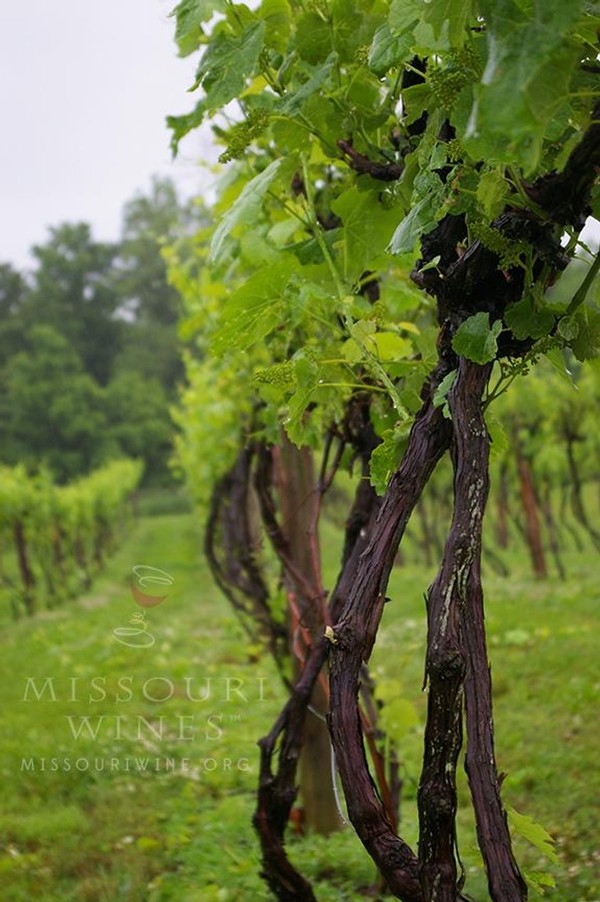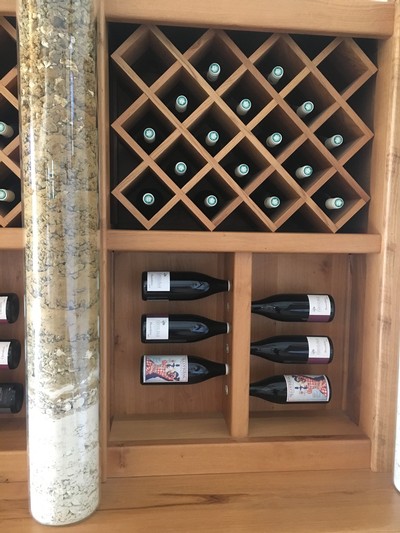Blinders
After a successful day at the winery, Eagles' Landing staff got together to play the game Blinders. The point of the game was to guess the wine picked by the host. Some cards allowed the winner to declare the exact vintage and label earning the most points. Other cards allow the winner to declare region and flavor profile. Finally, there were cards the winner could use to declare age (less than 8 years being considered young) and type of wine (red or white) for the least amount of points. Based on the number of rounds played, player with the most points wins the game. All guesses are made with 5 cards we were able to pull or steal during the game. Eagles' Landing winemaker and Advanced Sommelier Eric Taylor, went against Sommelier Karen Marcum (sommelier since summer of 2024), Tasting Associate Rose Dominguez, and newest Wine Tasting Assistant Anya Corp (no wine history. Mostly management and sales history).
The first round's wine was picked by Karen and was a 2018 wine from Bordeaux, France with medium tannins and tasting notes of molasses, graphite, plums, raspberries, dark cherries, and oak. Eric guessed a young wine (which he also disagreed with, claiming the wine was actually developing), with medium tannins, plum and raspberry notes, from Bordeaux, France. I also guessed a red wine from Bordeaux, France with notes of molasses.
The round two wine was 2022 Domaine M&C Lapierre Morgon from Beaujolais, France. This wine was picked by Eric Taylor because this is the wine that inspired him to create Eagles' Landing's 2023 Crunchy!. Karen had the flavor notes all picked out from cherry, plum, blackberries, and earthy tones. She began overthinking, preventing her from declaring the wine. I declared before Karen and besides guessing the complete wrong vintage by almost three decades, I guessed a low tannin red wine from Beaujolais, France with notes of black cherry. I also wanted to steal the card bubblegum notes from Rose but I never got the oppourtunity to do so. Eric asked what made me guess that region and I said that this French wine tasted 'chalky' and that American wines are often brighter and more fragrant. I now know that chalky tones come from the limestone soils prevalent throughout southern France.
In round three, I picked a 2020 Icewine from Augusta, Winery in Missouri. I picked this wine because Eric and I had a long conversation about Icewines from Canada a few weeks prior. This wine has the flavor profile of Peach, apricot, pineapple, pears, and honey. It is a rich and beautiful dessert wine. Eric Taylor guessed everything relating to this wine perfectly. He even guessed the grapes used to create this wine specifically naming Vignoles. He also talked about the icewine being artifically frozen unlike in Canada, meaning this was most likely a Missouri wine. He was impressed with the flavor profile saying that this is what Missouri grapes and wines are all about. That put head to head against French wines, it still tastes amazing. He only missed one thing. He guessed St. James Winery over Augusta Winery. Karen guessed Augusta. It was impressive to watch.
Wine is a living product
This was my submission for the August 2022 SommJournal essay contest. The prompt was, "How does aging in oak or stainless impact a finished wine?" My entry was not selected as the final award; however, I was happy to incorporate the recent online masterclass I had the pleasure of attending with Olivier Bernard of Domaine de Chevalier.
Wine is a living product. Each vintage is a snapshot of harvest: sugars, acids, and phenolic contents achieve balance dictated by growing conditions. The art of expressing terroir lies in capturing this picture in as short as four months or as long as twenty-four (or longer), and hoping it continues to gracefully develop for decades in bottle. To get from grape to glass, the winemaker’s most impactful decision is the vessel’s material selection, which will either retain characteristics of the fruit or develop them. As climate change alters the conditions in winegrowing regions, warmer vintages will see a shift towards inert vessels like stainless steel or larger oak to retain freshness and balance.
The impact of the vessel on the finished wine ranges from inert (low-impact) like stainless steel or glass-lined cement to oxidative (high-impact) found in small oak barrels. A winemaker wishing to capture acidity and freshness will opt for inert vessels. Here, the tank preserves the balance at harvest and simply allows the wine to clarify. Stainless steel also has the benefit of better temperature control during fermentation, which in the case of youthful wines meant to be consumed within a few years is paramount. That is not to say that it is impossible to control fermentation temperature in oak, but it is more difficult.
If the fruit requires maturing, such as polymerizing of tannins, oxidative vessels are the better choice, such as in Bordeaux and Napa. There is also a unique interaction of oak and ester development during fermentation, which is why many premium red wine producers take on the arduous task of fermenting in open top barrels. Additionally, oak barrels have been shown to reduce vegetative aromas and enhance fruitiness, helping offset negative characters in cooler vintages; however, as understanding of these compounds evolves, growers have more options in vineyard practices to better ripen fruit. As climate change continues, at what point is too ripe?
Today, winemakers have the greatest flexibility in how to age their wines, given local regulations or traditions (I doubt we will ever see Grand Vins of Bordeaux eschewing new barrique nor Barolo lessening aging requirements). As temperatures climb, ensuring wines retain freshness and balance will steer winemakers to using more inert vessels to preserve the acidity of the harvest in the finished wines. That is not to say that all previous oak-aged wines will convert to stainless, but we may begin seeing wines finish their elevage in tank rather than barrel, as Olivier Bernard of Domaine de Chevalier does for his Sauternes. For Bernard, capturing the precision of harvest is paramount. “Precision of the fruit. Precision of the aromatics. That is Sauternes.” Today, he is experimenting with oak casks up to 1500L, more than six times greater than traditional barrique. Other like-minded vignerons around the globe will be looking towards larger format oak and inert vessels to ensure balance of their wines, expression of terroir, and delicious wines to enjoy for years.
Eric Taylor
Advanced Sommelier
July 29th, 2022
Establishing our Roots
Written and presented for the Southwest Missouri Rotary Annual Winepairing Fundraiser, Feb. 2022
Presented by Eric Taylor, Advanced Sommelier
Antiquity to the New World
Viticulture and winemaking first established in Mesopotamia (epic of Gilgamesh is the first literary mention of wine). Our earliest recorded evidence of domesticated grapevines dates to 6,000 BCE in modern Georgia. However, the first indications of commercial winemaking is found in Armenia, in the Areni caves, dated to 4,000 BCE.
Vitis Vinifera, a wild vine in Europe, was domesticated and spread throughout ancient history by many cultures, but widespread by the Phoenicians and then the Etruscans. It was the Romans (and by default the Greeks) that truly established winemaking practices and records of quality wines. 121 BC was considered the very first “great” vintage. The roman empire also established the first “cru” system – Pliny the Elder mentioned several famed vineyards that produced exceptional wines consistently. At the Roman Empire’s peak, every citizen of Rome was consuming a full bottle of wine per day! (What a time to be alive!)
From Rome and Greece vines spread throughout modern Europe. The acclaimed growing regions of France (the Rhone, Burgundy, even as far north as Champagne), Spain (Priorato and Rioja), Germany (the Mosel and Rhein), and into Austria all were first established by Roman legions, then continued by monk orders (Cistercians and Benedictines) of the Catholic faith.
The modern varieties we are familiar with (Pinot Noir, Cabernet Sauvignon, Merlot, Chardonnay, Riesling), all trace their heritage to vines spread throughout this time. In fact, Cabernet Sauvignon was only bred as recently as the 1700s. (Chambourcin was introduced in the mid-1800s, so it isn’t much younger).
Meanwhile, wild vines also grew in North America. However, cultivation of the vine did not begin until Jamestown in the 1600s – a mere 2000 years after vinifera became widely established in modern Europe. The early pioneers felt the wild vines of America failed to produce quality wines, so they imported vines from Europe. However, it would be 200 years before they discovered why their transplanted vines all perished.
Early america winemaking, Phylloxera, and the rise of hybrids
Europe was insistent that America become an established Colony, but the big question remained: “what will we drink?!” The native vine, though persistent, did not create wines that emulated the taste of Europe’s vines; however, vines brought from France, Spain, and Italy all seemed to fail. During this early period, from 1600 through the early 1800s, wines from Jerez, Madeira, and other non-French regions populated America. Politics, it seems, had as large an influence on what was consumed in the new colonies as did biology. However, in the end, Nature trumps all. As our technology grew, so did our problems. Once steam was utilized to fuel transatlantic travel, a small, microscopic pest found its way from America to Europe – a blight that would bring an industry almost 6,000 years in the making to its knees – phylloxera.
Phylloxera (daktulosphaira vitifoliae) is a microscopic bug that lives in the soil here in the US. However, it found its way to the rest of the world in the 1800s. Phylloxera, though tiny, is a sap-sucking insect that infects, and ultimately kills, grapevines. However, this bug developed in America. While there is no cure for Phylloxera, native American vines developed their own resistance to this bug – a resistance that took early entomologists years to understand, a work that was spearheaded by Charles Valentine Riley – the first State Entomologist of Missouri. Riley’s works, in collaboration with J. E. Planchon (a French botanist from Montpellier), discovered that native american vines (vitis labrusca, vitis aestivalus, and vitis riparia, and vitis rotundifolia). With this discovery, many new crossbreeds (hybrids) began development. Many of these early answers to Phylloxera are still in production today: Chambourcin, Catawba, Vignoles, and Norton.
Today, only a handful of regions exist in which “own-rooted” vines exist – Chile, Ballard Canyon, eastern Santa Barbara, Mount Vesuvius, and Sardinia to name a few.
Missouri’s Role in the World of Wine
As mentioned above, it was discovered that Native American vines were naturally resistant to phylloxera. It was a Missouri scientist, CV Riley, that discovered phylloxera lived in the soil, and our native grapevines’ roots were resistant to this pest. However, he also knew that you could grow a vine, graft a different vine (called the scion) to the rootstock above the soil, then the fruit beared would be characteristic of the scion. So, you could graft Cabernet Sauvignon onto rootstock of Catawba, and the fruit that the vine would bear would taste like Cabernet. However, before this was fact was discovered, crossbreeding different species together, to create vines like Chambourcin and Vignoles, was thought more practical, as the resulting vine benefited not only from the phylloxera resistance but also from resistance to other disease pressure, such as powdery and downy mildew. During the late 1800s and early 1900s, hundreds of hybrid grape varieties were created.
But this is a small jump forward, for there is a reason Missouri was so prominent in helping the greater wine world – we were the leading producer in all of the US.
At its peak, in the late 1800s, Missouri accounted for more wine production than any other state in the Union. In the early 1800s (1830s-40s), the region of Hermann, Missouri was settled by German immigrants. Realizing their soils were too poor for traditional farming, they took a cue from the native vines growing along the bluffs of the Missouri River to begin grape farming. They even created an enticing program to ensure all townsfolk would tend their own vineyards, thus establishing a strong culture in viticulture. Shortly after, Italian immigrants followed this cue developing the area of Knobview, today called Rosati – a small township outside of… St. James.
At Missouri’s peak, it produced over 2 million gallons of wine per year. Missouri wines received top awards from wine festivals as far away as the Vienna Wine Fair…. In Eastern Austria. Quite the feat for lederhosen-wearing judges to pick wines from 10,000 miles away over their German neighbors. (Granted, the majority of the judges at the time were French – a fact that would be repeated over 100 years later, but we’ll get to that). So shortly before 1900, there were over 100 active wineries in Missouri producing over 2 million gallons of wine, spread across between 2,000 to 3,000 acres. At its peak, Knobview alone held 1,400 acres of vines. Today, the entire state of Missouri only holds 1,700 acres of vines. However, Missouri wines are once again on the rise.
Two important families pushed forward the new generation of Missouri winemaking: the Helds at Stone Hill in Hermann and the Hoffers at St. James Winery. Both families fell in love with the history and culture of Missouri winemaking and renovated existing facilities and vineyards to reimagine the future of Missouri viticulture. The Helds in Hermann fixed up the oldest continually operated winemaking facility in Missouri (which once produced up to 1.25 million gallons of wine) to be capable of production again. Today, their Chambourcin and Norton are shining examples of what Missouri wines can attain. The Hoffers developed St. James Winery, a communal winery that brought in fruit from the historic Italian settlements under one roof. Today, you can find St. James wines in Napa Valley.
While these two families were instrumental in redeveloping Missouri’s wine industry, a new generation of vignerons arise. Producers like TerraVox, who highlights the works of Thomas Volney Munson, another American viticulturist who developed countless varieties suitable to our climate, Noboleis, the single family-owned winery holding out against a large corporate buy-out of Augusta, America’s oldest AVA, and hidden gems like Heinrichhaus, a tiny, single-man operated winery that’s continued production since the 1950’s, almost under the radar, but not without his own acknowledgments. Today shows a renewed interest in obscure varieties like Catawba (made into an organic sparkling rose at Double Master [Master Sommelier and Master of Wine] Pascaline Lepeltlier’s winery in New York), low-alcohol Frontenac and Pet-Nat by Master Sommelier David Keck in Vermont, or new interpretations of classic Midwest varieties, like our very own Eagles’ Landing Edg-Clif Chambourcin, a Beaujolais-like presentation of a familiar grape.
So what is in store for Missouri’s future? While American wines hit the international stage 58 years ago with the Judgement of Paris in its rebound from prohibition, Missouri wines were already widely received over 100 years before. Tastes change. Tastes evolve. In 2019, Bordeaux, perhaps one of the most slow-to-change wine regions in the world, adopted several new varieties to be used in production. And while hybrid grapes were not admitted in this recent approval, they were set on the table, and many growers lament the continued disregard of hybrid production. Will you begin to see “Chambourcin de Bordeaux” anytime soon? Not likely. But if you ask whether or not esteemed growers like Stephane Derencourt at Cadet-Bon are dabbling with hybrids, you’ll get a knowing smile followed by a mischievous, “maybe…?”
Post Script adendum added July of 2024.
At the end of 2023, changes were announced to regulations for sparkling wines in England to allow hybrids into previous PDO wines post Brexit for the beginning of 2024, so there are nations looking at the value and feasibility of hybrid varieties in line with their "established" wines.
Domaine de la Chevalerie
A blog post from Eric's time as Beverage Director at Just A Taste and his trip to France in 2019.
DOMAINE DE LA CHEVALERIE - BOURGUEIL, FRANCE
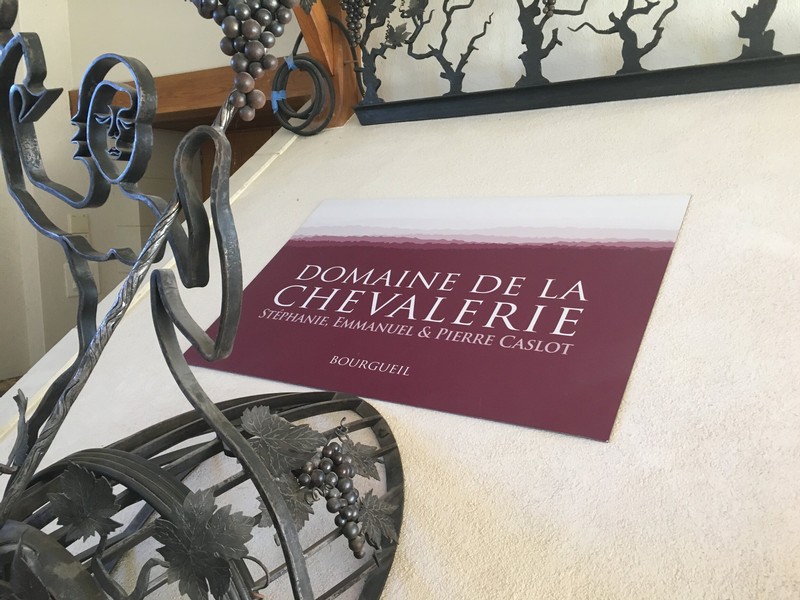
A 14th generation family producing exceptional biodynamic wines in the heart of Loire.
Located 7 kilometers northeast of Bourgueil outside the village of Restigne lies the biodynamic producer Domaine de la Chevalerie. It is run by the Caslot family whom has owned the estate since 1640. Today, the vineyards are tended by Emmanuel Caslot and winery operations are executed by his sister, Stefanie. Their young assistant, Clara, helps run business and marketing, but even she was getting her hands dirty when I first arrived. There are 4 additional employees at Chevalerie, meaning that they operate the entire domaine with only 7 people, though I was later informed they usually require 12-14. But, they all love the work they do!
The family has owned the estate since 1640, but the history of this property extends much further. What is now a perfectly controlled cave (cellar) originated between the 11th and 12th centuries as a quarry. This supply of limestone, locally called “tuffeau,” helped in the creation of many local historic buildings. Today, it is a perfect resting place for their 6+ cuvees (though do not let the term dissuade you, as they are each in fact bottlings of unique parcels of land).
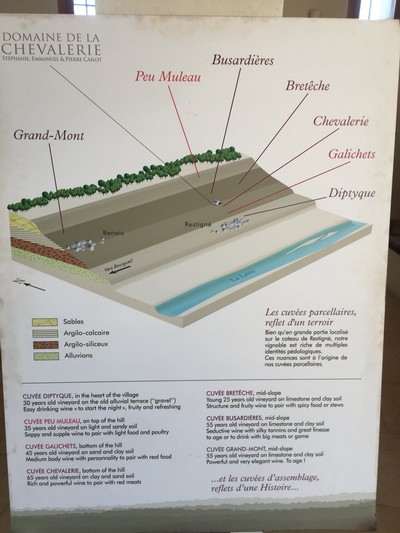 Each cuvee highlights the unique microclimate and subtle change in soil composition. From the sandy soils of Peu Muleau at higher elevation producing fresh, “drink now” wines to Grand-Mont with more limestone producing lush, age-worthy wines, the Caslots showcase the various expressions of Cabernet Franc. However, one through-motif is evident in all their wines: freshness. As Stefanie puts it, she prefers to think of her wines as “sports wine,” particularly in regard to the estate Chevalerie cuvee: “You can drink a bottle and never [get] tired.”
Each cuvee highlights the unique microclimate and subtle change in soil composition. From the sandy soils of Peu Muleau at higher elevation producing fresh, “drink now” wines to Grand-Mont with more limestone producing lush, age-worthy wines, the Caslots showcase the various expressions of Cabernet Franc. However, one through-motif is evident in all their wines: freshness. As Stefanie puts it, she prefers to think of her wines as “sports wine,” particularly in regard to the estate Chevalerie cuvee: “You can drink a bottle and never [get] tired.”
The 30 hectares at Domaine de la Chevalerie are all farmed biodynamically, a move which began in the early 2000s. This process began as an experiment, but after achieving certification in 2017, they were not done “playing” [as my friend Pihlipp at Weingut Bossert is want to say]. They have begun planting different types of cover crops to help replenish the life force of their vineyards. Additionally, they have planted a high-density vineyard to Chenin Blanc, partially because Stefanie loves the grape. And in response to the growing number of warm vintages, they have begun planting fruit trees between vineyard blocks to provide additional shade to help preserve the freshness which is all important to the character of their wines.
 In the cellar, Stefanie has a non-interventional style. The grapes are all hand harvested, sorted, gently destemmed, and fermented at cool temperatures with indigenous yeast without any sulfur additions. The population of local yeast is so healthy that the cellar smells like active ferment even in early July. The new wine rests in used 50- liter barrels until spring towards the entrance of the cave so to allow an easier malolactic fermentation. Depending on the cuvee, the wine will spend 6-10 months in neutral barrels before bottling. From here, the wines rest in bottle until they are ready for release, usually 3 to 5 years after the vintage. The Caslots’ style is fairly reductive and only minimal sulfur is included at bottling, meaning the wines express themselves best with a little time and air upon opening.
In the cellar, Stefanie has a non-interventional style. The grapes are all hand harvested, sorted, gently destemmed, and fermented at cool temperatures with indigenous yeast without any sulfur additions. The population of local yeast is so healthy that the cellar smells like active ferment even in early July. The new wine rests in used 50- liter barrels until spring towards the entrance of the cave so to allow an easier malolactic fermentation. Depending on the cuvee, the wine will spend 6-10 months in neutral barrels before bottling. From here, the wines rest in bottle until they are ready for release, usually 3 to 5 years after the vintage. The Caslots’ style is fairly reductive and only minimal sulfur is included at bottling, meaning the wines express themselves best with a little time and air upon opening.
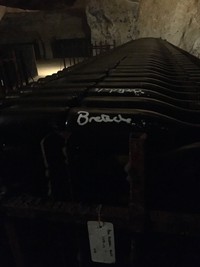
THE CUVEES
Most of Chevalerie’s wines I sampled were from the 2015 vintage, one which Stefanie describes as being “classic.” The summer had warm days with cool nights and never got too hot. During warmer vintages, Stefanie doesn’t necessarily worry about losing their freshness, but the elevated sugars can sometimes stress the native yeast and cause longer, more difficult fermentations.
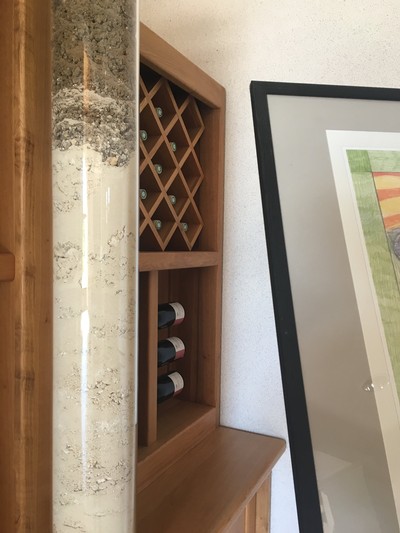 PEU MULEAU 2015
PEU MULEAU 2015
Producer: Domaine de la Chevalerie
Winemakers: Emmanuel & Stefanie Caslot
Region: France, Loire, Bourgueil, Peu Muleau vineyard
Grape Variety: 100% Cabernet Franc
Vineyard: sandy soils over limestone; 35-year-old vines
Method: shorter elevage of 6-8 months
Serving Suggestions: decant; serve with braised or grilled vegetables and poultry
Age: drink 2019 - 2021
Tasting Notes:
Nose: crushed strawberry & cherry with slight gunsmoke
Palate: elevated acidity with mild tannins and a medium body
Finish: high minerality with silty tannins and lingering acidity of red fruits
This is the highest elevation vineyard, though still only approximately 100 meters above the Loire river. The soil here is mostly sand and clay over limestone, though an important element is the source of this sand. Lower in the valley towards the banks of the Loire, the scattered sand is sedimentary deposits from the river. Up here at higher elevation, these sands have been carried by the wind, which distributes it differently in the makeup of the soil. The fruit isn’t necessarily any less ripe, but the wine shows itself as more red-fruit driven, like strawberry, cranberry, and raspberry.
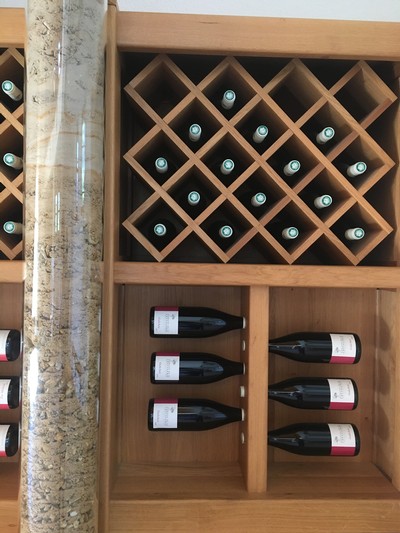 GALICHETS 2015 - SNAPSHOT
GALICHETS 2015 - SNAPSHOT
Producer: Domaine de la Chevalerie
Winemakers: Emmanuel & Stefanie Caslot
Region: France, Loire, Bourgueil, Galichets vineyard
Grape Variety: 100% Cabernet Franc
Vineyard: sand and clay over limestone; 45-year-old vines
Method: 8-10 month elevage in used barrels
Serving Suggestions: decant; serve with veal and savory dishes
Age: drink 2019 - 2023
Tasting Notes:
Nose: raspberry, pencil shavings, and hint of underbrush
Palate: relaxed acidity with mild tannins and more generous fruit
Finish: clean with more firm tannin structure and softer acidity
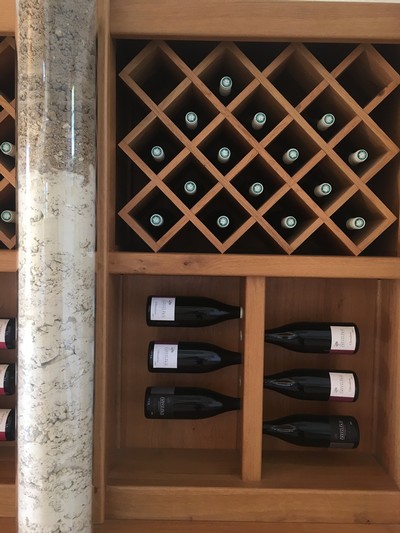 CHEVALERIE 2015 – SNAPSHOT
CHEVALERIE 2015 – SNAPSHOT
Producer: Domaine de la Chevalerie
Winemakers: Emmanuel & Stefanie Caslot
Region: France, Loire, Bourgueil, Chevalerie vineyard
Grape Variety: 100% Cabernet Franc
Vineyard: lower elevation; clay and sand over limestone; 65-year-old vines
Method: elevage of 10 months in used barrel
Serving Suggestions: decant; serve with roasted lamb and seared vegetables
Age: drink 2019 - 2025
Tasting Notes:
Nose: less aromatically intense of ripe cherry and spices
Palate: deeper flavors with rich tannin yet finesse
Finish: energetic finish keeps the riper tannins soft and fresh
BUSARDIERES 2015 – SNAPSHOT
Producer: Domaine de la Chevalerie
Winemakers: Emmanuel & Stefanie Caslot
Region: France, Loire, Bourgueil, Busardieres vineyard
Grape Variety: 100% Cabernet Franc
Vineyard: limestone and clay over limestone; 55-year-old vines
Method: elevage of 8-10 months in used barrels
Serving Suggestions: decant; serve with braised or grilled vegetables and poultry
Age: drink 2019 - 2025
Tasting Notes:
Nose: black raspberry and prunes with more noticeable herbal and vegetal notes
Palate: more robust character with rich, round tannins
Finish: clean, rich fruit with round mouthfeel
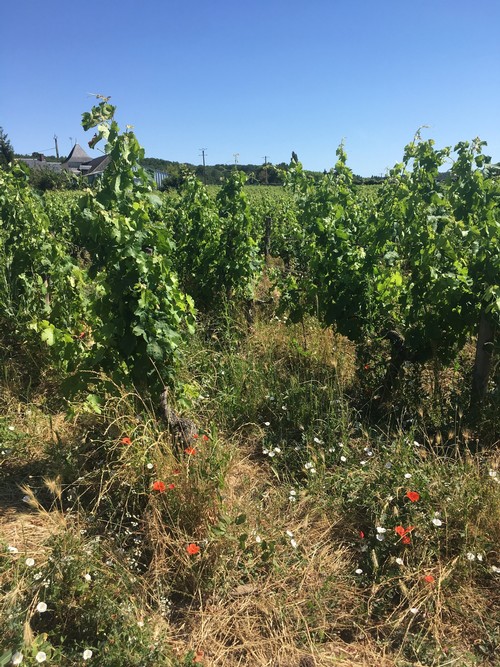
Weingut Bossert
This is a transfered blog from my time as Beverage Director of Just A Taste. In 2016, I had the incredible opportunity to visit an acquaintance winemaker in Germany. Sadly, I have precious few bottles left from his vineyard.
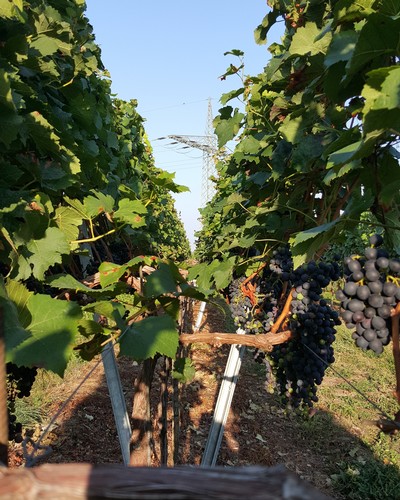 Tucked away a short train ride south of Frankfurt lies the lovely little village of Gundersheim. As you take the Bahn west of Worms, you are greeted by gentle rolling hills covered with beautifully manicured vineyards. Though a majority of these plantings produce vast quantities of simple landwein, there are two sites quickly gaining acclaim surrounding the small village, a feat largely due to the work of the equally youthful rising stars Philipp and Johanna Bossert.
Tucked away a short train ride south of Frankfurt lies the lovely little village of Gundersheim. As you take the Bahn west of Worms, you are greeted by gentle rolling hills covered with beautifully manicured vineyards. Though a majority of these plantings produce vast quantities of simple landwein, there are two sites quickly gaining acclaim surrounding the small village, a feat largely due to the work of the equally youthful rising stars Philipp and Johanna Bossert.
This sibling winemaking team, like their prized lagen, have deep roots in the local wine history. Their great-grandparents first cultivated the vine in the surrounding hillside in 1848, a tradition that has carried on since. Hermann, their father, rejuvenated the cellar and winery in the 1990s and gave over a small portion of production for his children “to play.” They have quickly gained a reputation for creating exquisite premier wines, and for good reason. Before completing his education at the Geisenheim University, Philipp spent time studying at the esteemed Austrian Weingut Bründlmayer and Château de Pommard in Burgundy, where he developed a passion for Spätburgunder. He has combined his two experiences to develop a Spätburgunder block on the rare Lyra trellis system in the nearby Höllenbrand vineyard. The younger of the siblings, Johanna, likewise graduated from Geisenheim University after an internship at the Swiss Weingut Fromm. Though she is the more aggressive of the two at promoting their wines, she is often found out in the vineyards meticulously tending the vines. The level of detail she brings to each vine is truly impressive.
Philipp always refers to “play” when it comes to his process. Their landwein Riesling is split into 5 – 1000L batches. The first three are inoculated with different yeast strains, while the remaining two utilize spontaneous yeast. Depending on the vintage, juice might spend a brief period macerating to help lower the acidity before being chilled and left to settle. The juice is then split into the separate stainless steel tanks for fermentation. Ultimately, the final blend is achieved based on his sensory analysis of the separate batches. It ultimately has the same character, but the journey to the finished result may veer with each vintage. If you ask him to explain his reasoning for any one decision, he simply states, "You must play!" with a slight shrug and mischievous grin.
Combining their pedigree, intensive education, and a good measure of hard work and humility, it is easy to see the potential this duo has before you first bring the glass to your nose. They have worked tirelessly to develop the vines on their nearby sites, Höllenbrand and Königstuhl. Höllenbrand is a hill just north of Gundersheim. With a strong southern facing, Philipp prefers this site for his Lyra Spätburgunder. Likewise, in 2016, he was replanting a Riesling block to benefit from this warmer site. Again on Lyra trellis. The blocks located on Königstuhl are more varied, both in orientation and grape varietal. This largely retains their plantings for their Ortsweine labels, though an exciting, complex single-vineyard Riesling was made while waiting for the new Lyra vineyard to mature.
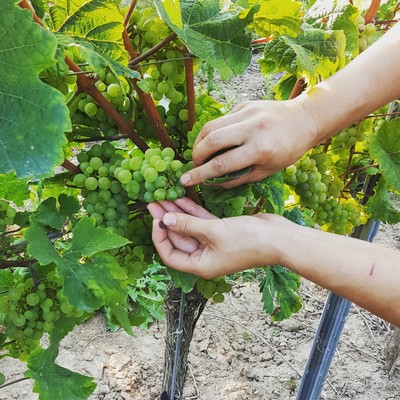 Johanna prefers to be out in the vineyard and takes a more optimistic viewpoint towards their process. Whereas Philipp would say, “This is not good,” regarding the current condition of the fruit, Johanna’s response would be “These are not yet ready. This is what we are looking for.” However, her approach in the vineyard allows no room for error. It will be done right, or not at all. This fierce approach is also present when she tastes wines with clients, often expressing “This is why our wines are so good.” It is a character she inherited from their father, Hermann, an experienced vintner and grower confident in his process and unyielding in his efforts.
Johanna prefers to be out in the vineyard and takes a more optimistic viewpoint towards their process. Whereas Philipp would say, “This is not good,” regarding the current condition of the fruit, Johanna’s response would be “These are not yet ready. This is what we are looking for.” However, her approach in the vineyard allows no room for error. It will be done right, or not at all. This fierce approach is also present when she tastes wines with clients, often expressing “This is why our wines are so good.” It is a character she inherited from their father, Hermann, an experienced vintner and grower confident in his process and unyielding in his efforts.
A nice description of the technique of twisting the cluster to get better quality.
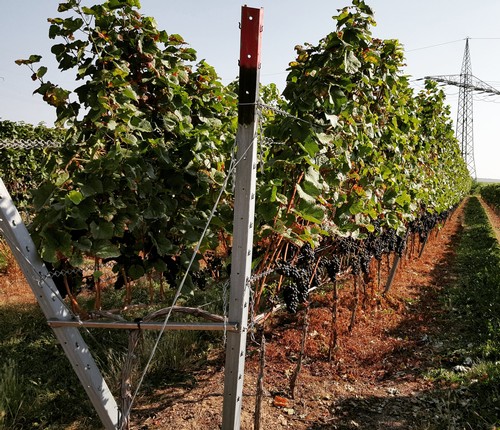
Both vineyards share a similar soil composition: loess clay situated over limestone, with more limestone marl in Königstuhl. The primary difference comes from their orientation. Höllenbrand, roughly translating to “Hell’s fire,” refers to the scorched earth due to its direct southern exposure, providing the vine with ample light and warmth to obtain riper, more robust fruit. Conversely, Königstuhl’s contour collects a regular breeze that helps dry the fruit from early-morning dew, preventing early onset of mold or fungal issues and allowing for a longer, slower ripening.
Johanna’s favorite site is an old limestone quarry. Her, you can see the multiple layers of soil. First, the loess loam and clay (tonne) for roughly a meter. Then, a deep layer of limestone (kalk). This kalk is important for proper drainage and expressing the mineral edge to their wines. The quarry itself was used in the early 1900s. Horse-drawn wagons would haul the cut stone to train depots. Today, it is a nature preservation and home to one very large owl.
During my stay, I had the great fortune of tasting a wide range of their wines, including Hermann’s prized “Millenium Wine,” a delicious late harvest Müller-Thurgau wine from the 1999 vintage, though harvested January 1st, 2000. He has precious few bottles left, so I must admit, I didn’t write down any notes but simply cherished the wine. Though the siblings are responsible for the premium range, there is nothing ordinary about Hermann’s wines. In particular, his 2015 Weissburgunder from Königstuhl, simply labeled “Gundersheimer,” overperforms any village wine I’ve tried. Cool, fresh fruit notes of pear, tart lychee and kiwi, and melon rind appear directly on the nose. A mild, lingering acidity with pops of fruit helps keep the wine fresh. There is a certain weight and richness towards the midpalate followed by a return of tight acidity and minerality expressing the limestone soil with a slight salinity, making the wine bold and exuberant without being too imposing, a trait shared by its winemaker. All of Hermann’s wines showcase a similar acid-mineral relationship which makes them downright quaffable. I carried as many bottles as my pack would hold all the way to Sienna.
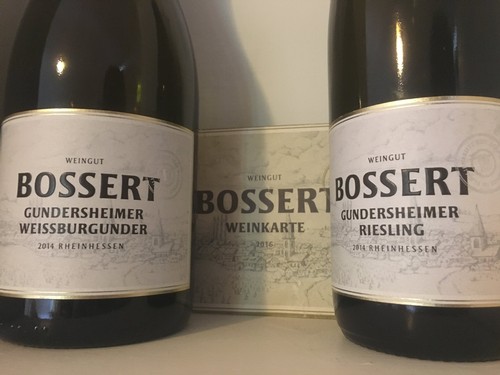
The siblings craft three lines of wines: their black capsule (Gutsweine), silver capsule (Ortsweine), and gold capsule (Lagenweine). Each line includes both a Riesling and Pinot Noir with a Gundersheimer Weissburgunder at theOrtsweine level. I was fortunate enough to try the entire 2015 vintage of Rieslings and 2014 Pinot Noir:
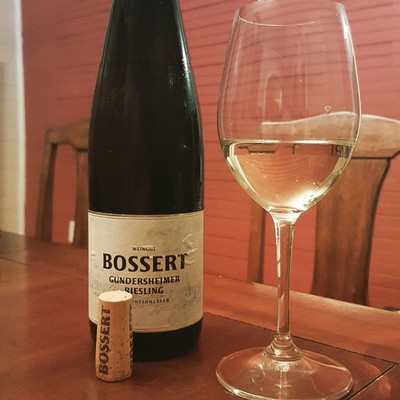 The 2015 Gutswein Riesling shows bright fruit noes of melon, pear, white peach, and soft hints of green apple (Philipp is not a fan of fermenting his whites at too low a temperature creating the “green apple Jolly Rancher” character too commonly seen). Rich floral notes of honeysuckle, though not too sweet, follow with salty sandstone. The wine has a rich mouthfeel yet is extremely gripping. A soft attack that swells suddenly showcasing the grape’s strength.
The 2015 Gutswein Riesling shows bright fruit noes of melon, pear, white peach, and soft hints of green apple (Philipp is not a fan of fermenting his whites at too low a temperature creating the “green apple Jolly Rancher” character too commonly seen). Rich floral notes of honeysuckle, though not too sweet, follow with salty sandstone. The wine has a rich mouthfeel yet is extremely gripping. A soft attack that swells suddenly showcasing the grape’s strength.
The 2015 Gundersheimer Riesling (silver capsule) went through spontaneous fermentation though is very clean with cool, fresh fruit. Where the Gutswein expressed power, the Ortswein shows finesse. Light notes of honeysuckle, less prominent than the Gutswein, though sweeter, balances aromas of honeydew, nectarine, and light kiwi notes. Careful hand pruning was done to keep the native yeast healthy – one leaf was left next to each cluster to provide nutrient to kickstart fermentation.
The 2015 Lagenwein Riesling was from the Königstuhl vineyard and barrel-aged on the gross lees. Lean fruit mixes with soft floral expression and a light yeast note. Tropical fruit notes verge from tart to ripe with a light cream and banana toffee caramel finish with very subtle oak notes. The acidity is very focused yet with a round texture carrying a persistent, complex finish.
The 2014 Gutswein Spätburgunder expresses tart cherry and boysenberry notes with soft phenolic notes from the grape seeds. Light smoke and earth mix with leaf and stem notes due to the limited whole-cluster inclusion. A supple mouthfeel with occasional bursts of acidity and a pleasant, simple finish. The character reminds me of that of a child’s light easy dance showing their impatience.
The 2014 Gundersheimer Spätburgunder shows more earth and smoke than the Gutswein with subtle notes of green tobacco and violet. Tart, black cherry and raspberry followed by vanilla and tree bark. The fruit flavor quickly dissipates into more savory, complex tones. The child had matured a bit, but this wine still dances nonetheless.
The 2014 Höllenbrand Lyra Spätburgunder was a barrel sample which had spent 18 months in French Oak. Tart black cherry and raspberry notes dominate the nose, though sadly it was slightly closed off at the time. However, the texture showed the true quality of the wine with long lasting acidity and a tight, fine tannin structure.
Additionally, we sampled the 2012 Höllenbrand Lyra Spätburgunder which was available. Those additional two years were well worth the wait, as the wine had achieved an incredible balance of fruit, earth, minerality, and oak. Mild cherry, boysenberry, and prune followed by spice and vanilla. The wine was a clear garnet fading to brick showing is maturity, though the wine was still brightly acidic and showed enough warmth and richness from alcohol that was supported by a beautiful texture and length. Had my pack had any more room, I would have purchased their remaining stock.
One note you cannot express in mere tasting notes: every wine shared the same aromas present in the winery and that of the village itself. I wasn’t really able to truly appreciate it until I recently opened a bottle and was instantly transported back to Gundersheim. Earlier this year (in April of 2018), I opened one my remaining (treasured) bottles: the 2014 Gundersheimer Weissburgunder.
The wine was star bright straw yellow of a medium color intensity. It was quite fruit forward, with tart tree fruits and ripe citrus, yellow pear, yellow apple, and quince. Lemon and lime peel moved into hints of star fruit. Yellow and white flowers aligned with a slight waxiness and herbal note. Watercress, parsley and radish. Slight chalk and sedimentary rock showed toward the finish (and I was reminded of the Quarry visit with Johanna). The structure had a very sharp acidity that was lingering with a slight bitterness providing a more complex texture. I savored every last drop and wished for a second bottle, as the wine could easily have aged several more years.
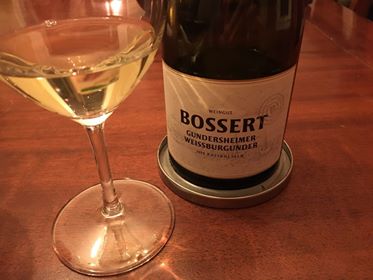
Should you find yourself visiting the Rheinhessen, make your way out south of Frankfurt to the tiny village of Gundersheim. Weingut Bossert’s wines speak for themselves, yet the hospitality of its family goes above and beyond.
A special thanks to Philipp and Emily, my hosts, and congratulations on your marriage! Thank you, Philipp, for imparting just a fraction of your vast knowledge in the cellar. We have utilized some of your suggestions in our own wine endeavor. Thank you, Johanna, for your patience with my array of questions regarding your viticulture practices and for the tour of the quarry. Thank you, Emily, for being such a generous host (as well as translating!). And thank you to the rest of the Bossert family for taking the time to share your history, hospitality, and wines. All the best.
